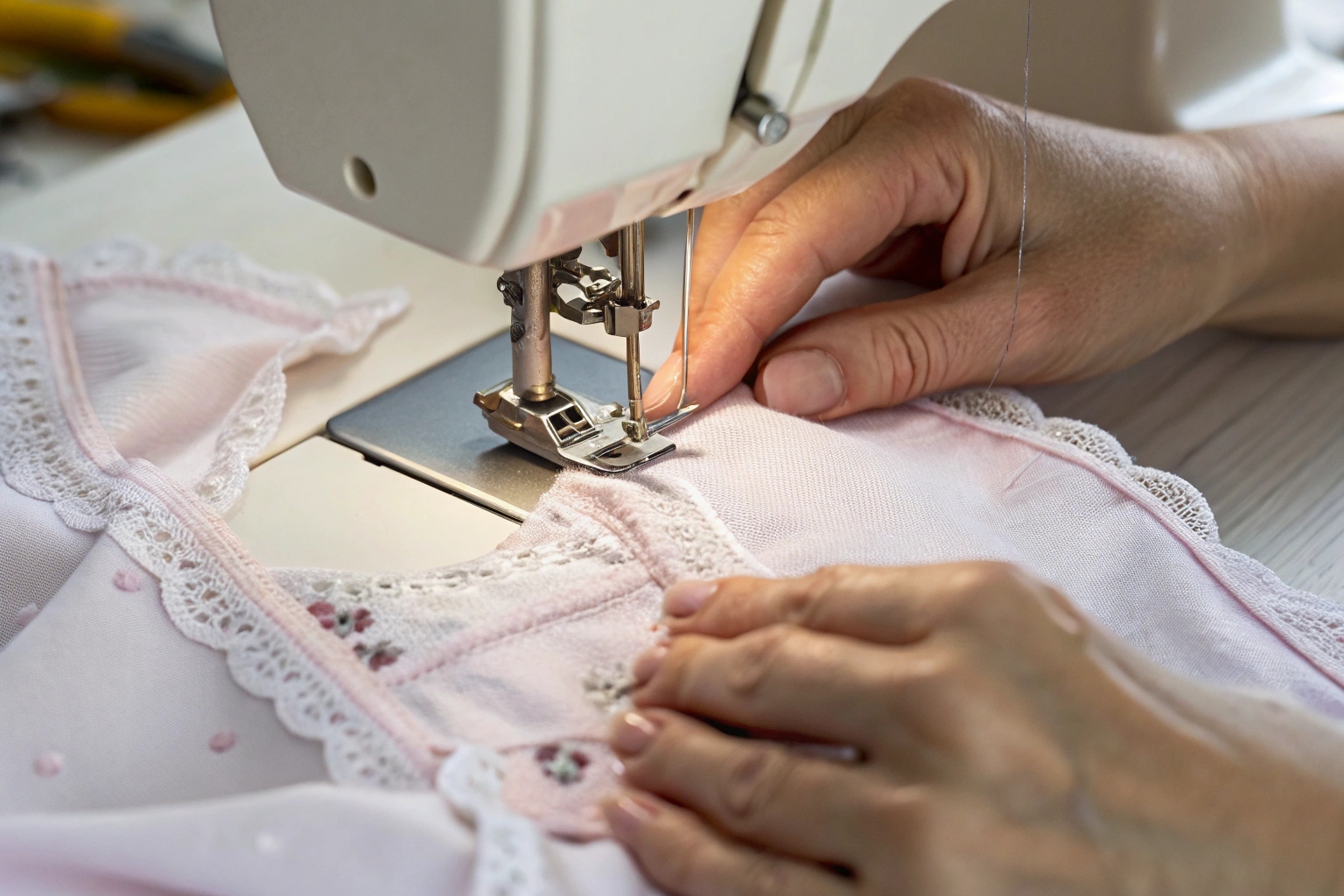Babywear may look simple—but producing it correctly requires serious skill. Tiny seams, delicate fabrics, and strict safety standards make sewing baby garments one of the most specialized tasks in clothing manufacturing.
Skilled sewing is essential in babywear because it ensures durability, comfort, safety, and consistent sizing. Without experienced sewers, even premium fabrics or cute designs can fail due to poor construction.
In this article, I’ll explain why sewing matters so much, what techniques are used, and how to recognize high-quality babywear.
How Stitching Quality Affects Babywear Durability?
Parents expect baby clothes to survive crawling, frequent washing, and constant movement. That all comes down to how well the garment is sewn.
Stitching quality affects babywear durability by holding seams together through repeated stretching, washing, and wear. Loose threads or weak seams lead to faster product failure and higher return rates.
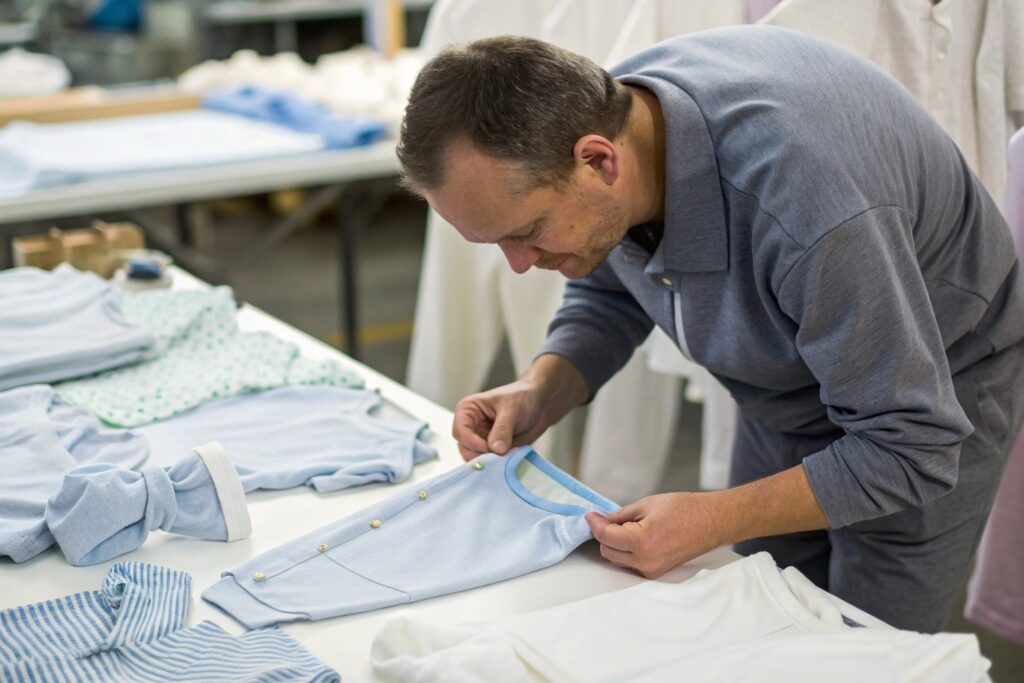
Key areas where stitching strength matters:
| Garment Part | Stitching Concern |
|---|---|
| Shoulder and neckline | Needs reinforcement to avoid warping |
| Crotch and diaper area | Extra strength needed for snap closures |
| Sleeve cuffs | Must resist stretching and pulling |
| Side seams | Require balanced tension and alignment |
Stitch types commonly used in babywear:
| Stitch Type | Purpose |
|---|---|
| Overlock (serger) | Neatly finishes raw fabric edges |
| Coverstitch | Used for hems—flexible and flat |
| Flatlock stitch | Seamless feel for baby comfort |
| Lockstitch | Found in snap or button reinforcements |
At Fumao, our sewing lines are trained specifically for babywear, and we reinforce all high-friction zones to boost product lifespan.
Sewing Techniques That Ensure Baby Comfort?
Comfort is key in baby clothing. Poor sewing leads to itchy seams, rough edges, or tight areas that irritate sensitive skin.
Sewing techniques that enhance baby comfort include flat seams, soft binding, smooth hems, and tagless construction. These methods reduce friction and allow babies to move freely without irritation.
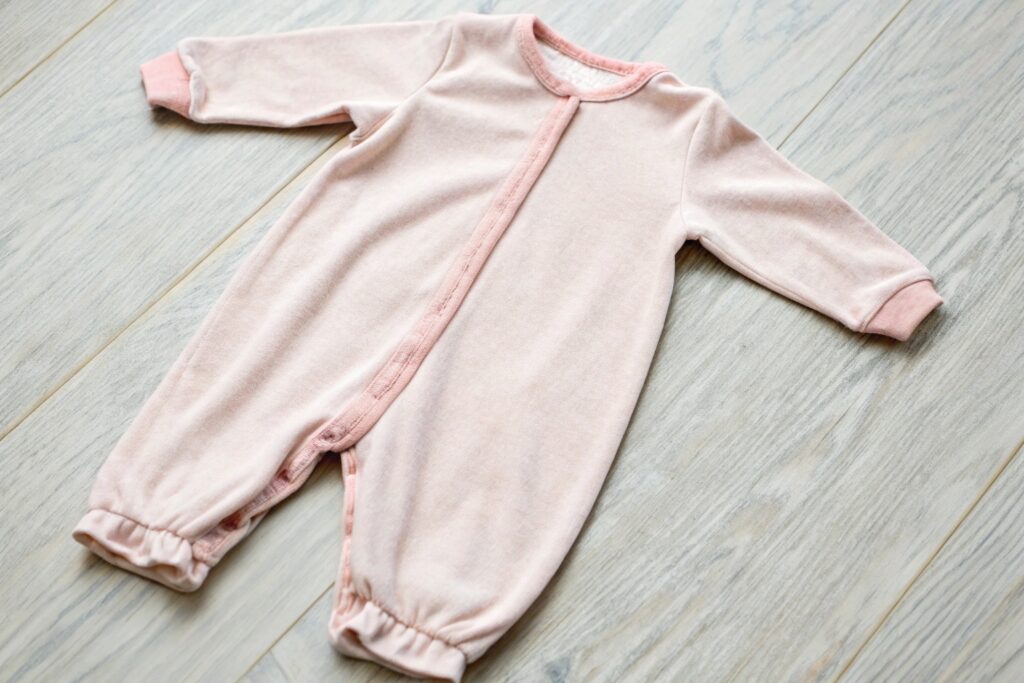
Comfort-focused techniques:
| Technique | How It Helps |
|---|---|
| Flatlock seams | Prevent chafing on inner legs or arms |
| Elastic encased in fabric | Softens waistband feel |
| Self-fabric binding | Avoids stiff rib or overlock irritation |
| No external tags | Eliminates scratching behind neck |
| Seam direction trimming | Prevents bulky layering at armholes |
Special attention areas:
- Armholes and neckline joins (often rub against skin)
- Crotch seam area (tight fit + movement needs)
- Side seam labels or care tags (choose printed options)
Our sewing team at Fumao uses baby-specific machine settings for light fabrics, and we double-check seams during quality control to avoid scratchy or tight areas.
Why Skilled Labor Reduces Production Defects?
Sewing baby garments involves tiny pieces, small seam allowances, and soft knits that are easy to stretch. That’s why skilled labor makes a huge difference.
Skilled labor reduces production defects by sewing with precision, identifying errors early, and adapting techniques for soft, stretchy fabrics commonly used in babywear.
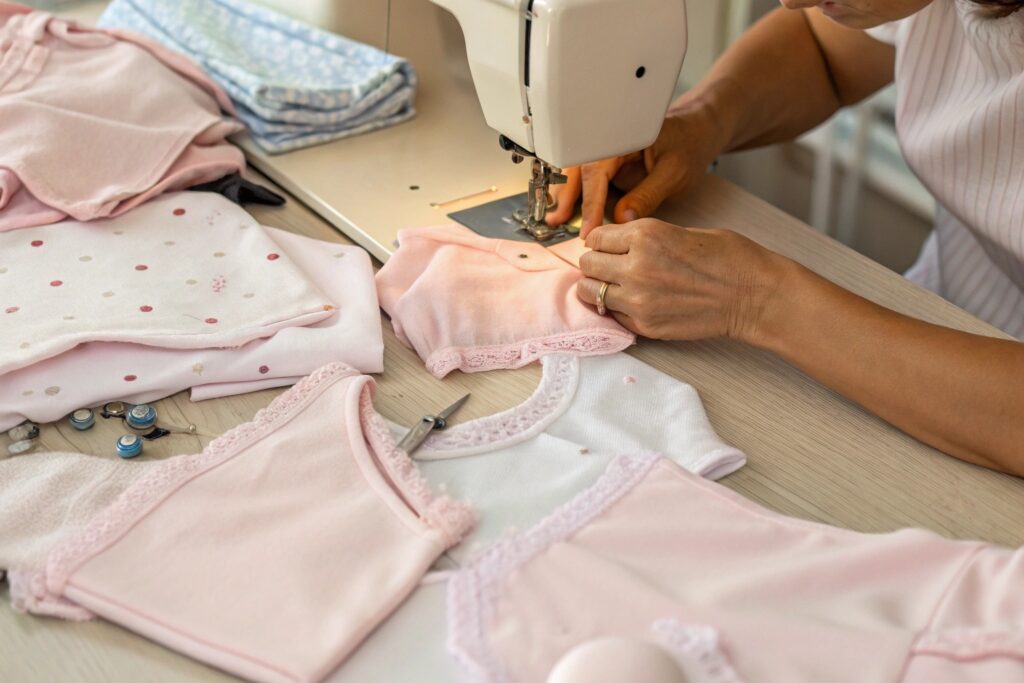
Common defects prevented by skilled sewing:
| Defect | Caused By |
|---|---|
| Twisted seams | Poor handling during serging |
| Uneven neckline | Incorrect tension or pattern alignment |
| Crooked snaps or buttons | Misalignment on production line |
| Puckered hems | Wrong machine settings for stretch knit |
| Hole at seam joins | Inexperienced handling of multilayer corners |
What skilled sewers do better:
- Adjust tension for knit vs woven fabrics
- Seam match prints or stripes
- Handle curved seams without puckering
- Spot skipped stitches before moving to the next unit
At Fumao, we invest in ongoing training for our sewing staff—especially when onboarding new babywear clients with custom fits or special fabrics.
Signs of Expert Craftsmanship in Baby Clothes?
So how can you tell if a piece of baby clothing is well-made—just by looking or feeling it?
Signs of expert craftsmanship in babywear include even stitches, clean seam finishes, balanced construction, durable hems, reinforced closures, and soft inner seams. These details reflect both skill and care.
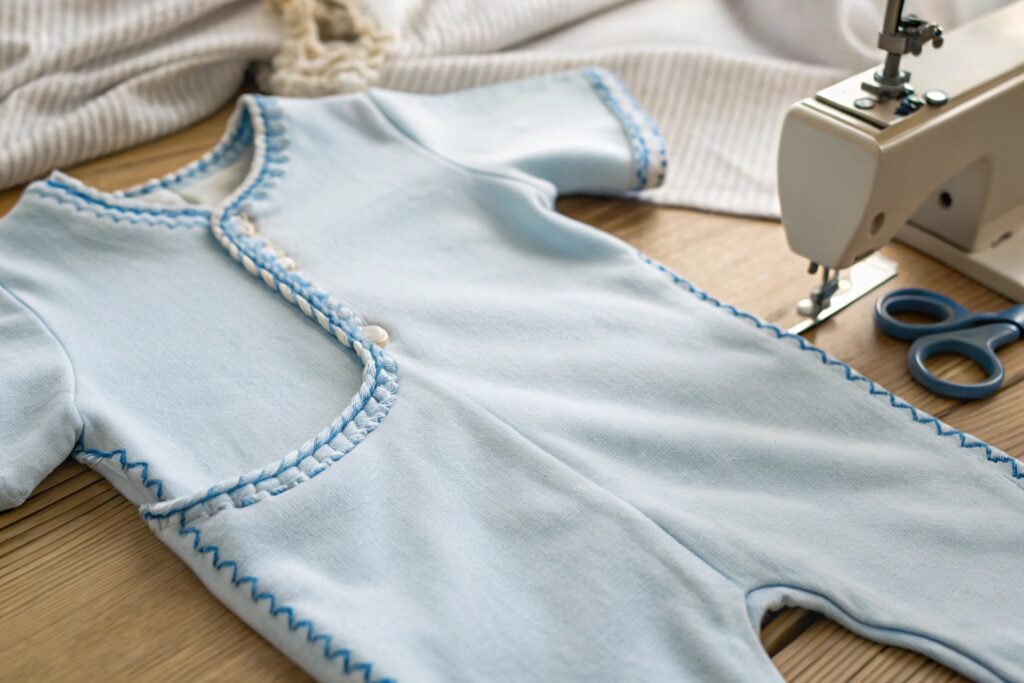
What to look for:
| Detail | What It Tells You |
|---|---|
| Even stitch length | Controlled sewing, balanced tension |
| No loose threads | Proper finishing and trimming |
| Clean neckline joins | Accuracy in alignment and assembly |
| Snap/button strength | Proper reinforcement inside |
| Folded hems and cuffs | Durability and neat construction |
| Soft-touch inside seams | Focus on baby comfort and safety |
Feel test:
- Gently pull the seams—Do they stretch and return smoothly?
- Turn inside out—Is the inside just as neat as the outside?
- Rub the neck seam—Does it feel smooth or rough?
At Fumao, all babywear orders include visual QC photos and seam close-ups before shipment, so clients can judge craftsmanship before opening the carton.
Conclusion
Skilled sewing is at the heart of quality babywear. From stitching durability to baby-safe construction, expert craftsmanship ensures your garments look good, feel soft, and last longer. For brands that want to build trust with parents, investing in skilled production partners like Fumao is the smartest move.

